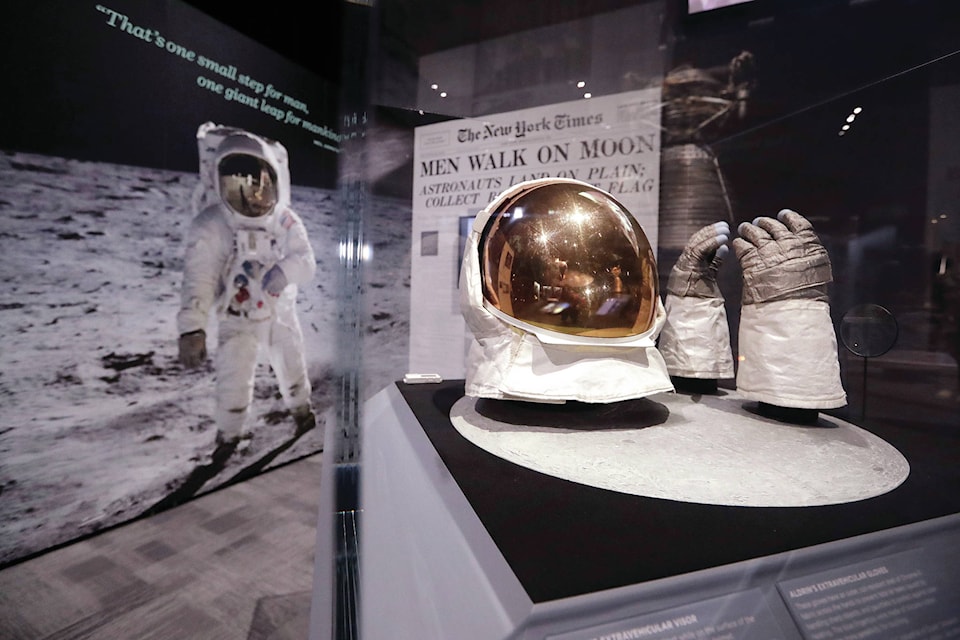After landing on the moon, taking one small step for man and a couple of giant leaps for mankind, it was finally time for Apollo 11 astronauts Neil Armstrong and Buzz Aldrin to wind down and get some sleep. The problem was where?
Their tiny Lunar Excursion Module, nicknamed Eagle, was designed to land them on the moon’s Sea of Tranquility —it was not designed to give them a tranquil night’s sleep.
With just 160 cubic feet of space inside, the LEM had no beds for the weary Apollo 11 astronauts. It had no seats, either.
The reason was weight. There was a limit to how many pounds of instruments and gear the Eagle could carry for its moon landing and subsequent liftoff to bring the astronauts back to their orbiting command module.
“Quickly discarded were stools for the pilots,” noted a 1969 Orlando Sentinel story about the LEM’s weight issues. “It was decided the astronauts could stand, with the aid of harnesses.”
In the early hours of July 21, 1969, after wrapping up a thrilling but grueling period of astronauting on the lunar surface, it was time for Armstrong and Aldrin to go to sleep. Their mission of becoming the first humans to walk on the moon was more successful than becoming the first to sleep on it.
Neither was able to fall asleep.
“Neil has been lying on the engine cover and I curled up on the floor,” Aldrin reported when the astronauts received their “wake-up” call from Mission Control.
A 2014 story posted on NASA.com offered greater detail on the sleeping problems the Apollo 11 astronauts faced:
The Eagle was not a sleepy place. The tiny cabin was noisy with pumps and bright with warning lights that couldn’t be dimmed. Even the window shades were glowing, illuminated by intense sunshine outside.
“After I got into my sleep stage and all settled down, I realized there was something else (bothering me),” said Armstrong. The Eagle had an optical telescope sticking out periscope-style. “Earth was shining right through the telescope into my eye. It was like a light bulb.”
To get some relief, they closed the helmets of their spacesuits. It was quiet inside and they “wouldn’t be breathing all the dust” they had tramped in after the moon walk, said Aldrin. Alas, it didn’t work.
“The suit’s cooling systems, so necessary out on the scorching lunar surface, were too cold for sleeping inside the Eagle. The best Aldrin managed was a “couple hours of mentally fitful drowsing.” Armstrong simply stayed awake.
When the wake-up call finally came, “Tranquility Base, Tranquility Base, Houston. Over.”
Armstrong answered with alacrity, “Good morning, Houston. Tranquility Base. Over.”
The long day was done. It was time to go home, to Earth, for a good night’s sleep.
Since the nearest motel was more than 238,000 miles away, NASA needed to find a way for Apollo astronauts to sleep on future moon missions.
By Apollo 12’s launch in November 1969, the space agency had a sleep solution that was lightweight and would allow astronauts to lie down horizontally in the LEM: moon hammocks.
“Apollo 12 astronauts Charles Conrad Jr. and Alan Bean will sleep better than Apollo 11’s passengers did during their rest period after landing on the moon aboard (the) lunar module,” the Orlando Sentinel reported the day before Apollo 12’s launch.
An illustration in the newspaper showed the hammocks criss-crossing each other bunk-bed style, with the commander sleeping up top and the pilot on the bottom. The hammocks were attached to walls with velcro and came with an insulator for the bottom and blanket for the top.
Despite the upgrade in sleeping arrangements, it wasn’t until Apollo 16 that astronauts launched into the elusive good night’s sleep on the moon.
As Discover magazine reported in 2017, “Both John Young —who tried sleeping without his liquid cooling garment one night —and Charlie Duke slept well in their criss-crossing hammocks. Duke did take a sleeping pill the first night but woke up twice from errant master alarms and once from static in his earpiece. But all in all they slept remarkably well with Young going to far as to say he slept like a brick.”
The moon hammocks seemed to be a success, but where did NASA get the idea for them?
Perhaps from one of its better-known engineers —who also happened to be the first sleepless man on the moon.
“I didn’t mind sleeping on the engine cover. I didn’t find it that bad,” Armstrong explained during a debriefing after Apollo 11. “I made a hammock out of a waist tether —which I attached to some structure handholds —to hold my feet up in the air and in the middle of the cockpit.”
